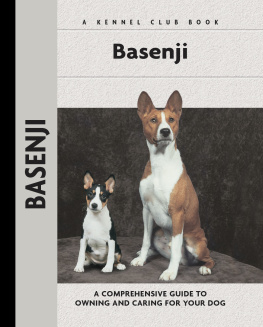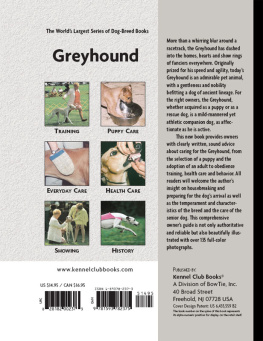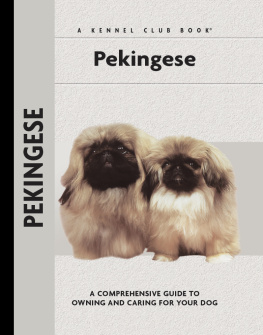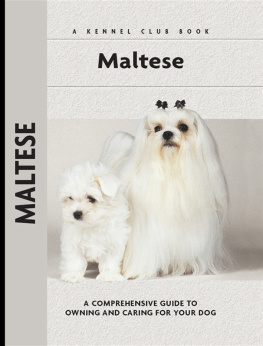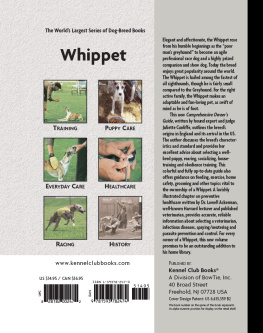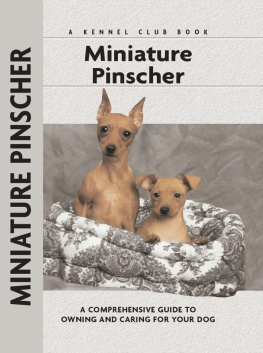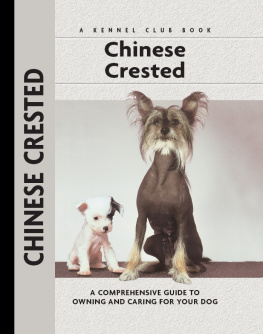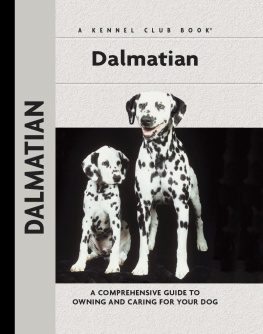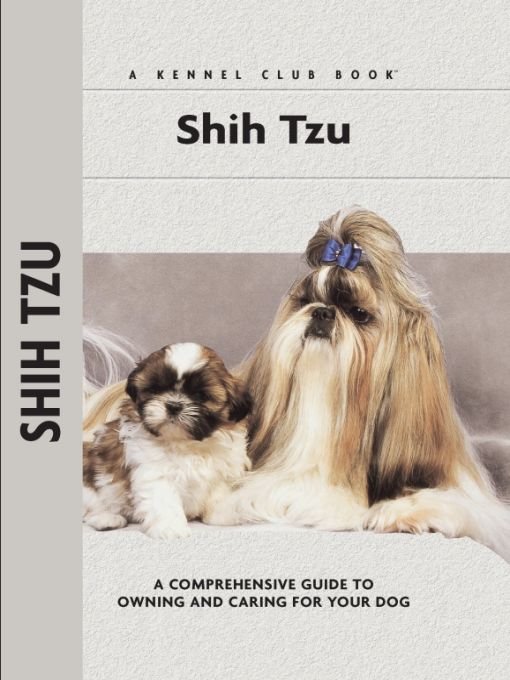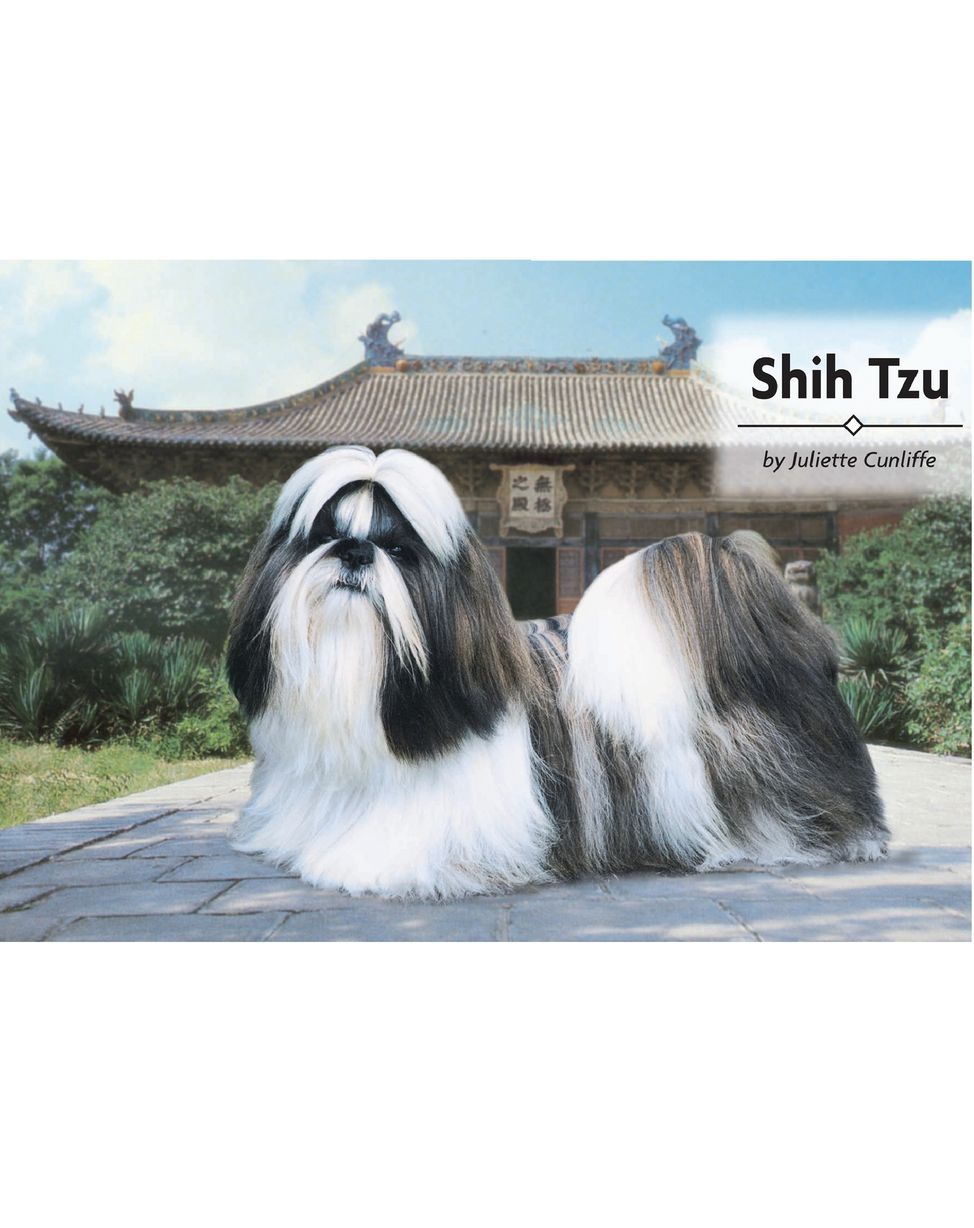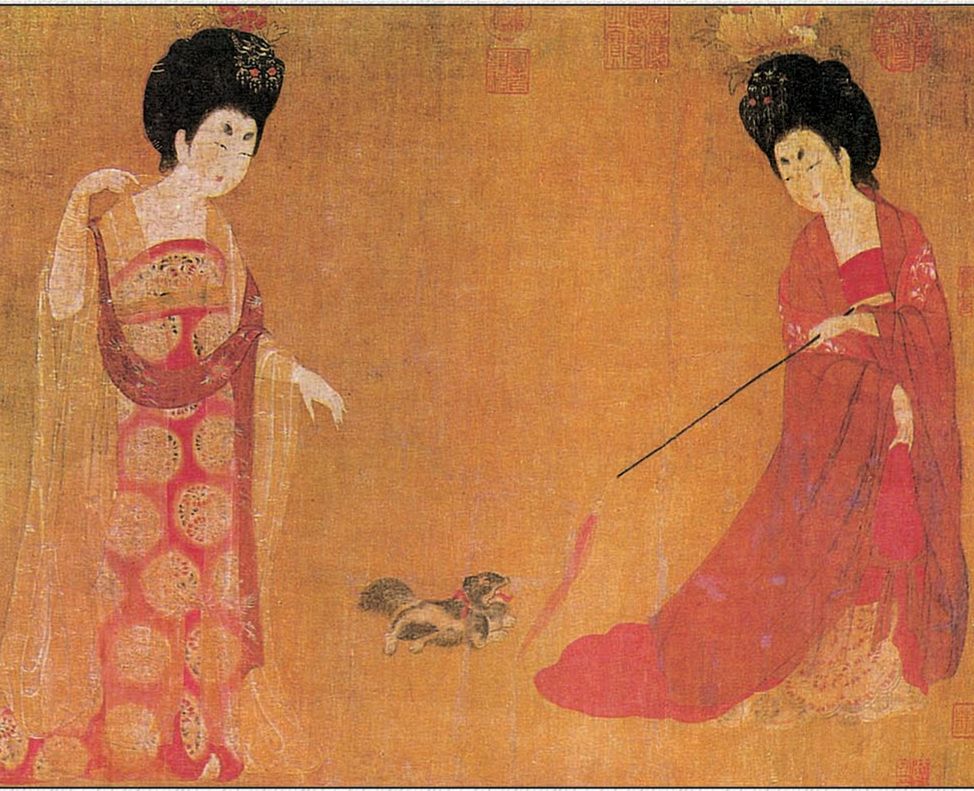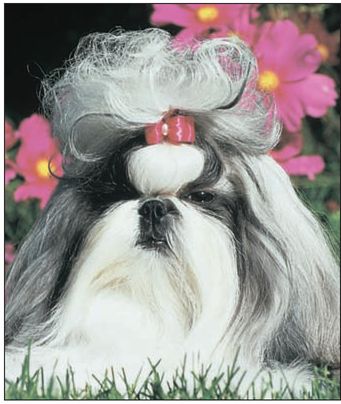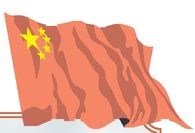Table of Contents
Head: Round, broad, wide between eyes, its size in balance with the overall size of dog being neither too large nor too small. Skull, domed. There is a definite stop.
Eyes: Large, round, not prominent, placed well apart, looking straight ahead. Very dark.
Muzzle: Square, short, unwrinkled, with good cushioning, set no lower than bottom eye rim; never downturned. Front of muzzle should be flat; lower lip and chin not protruding and definitely never receding.
Nose: Nostrils are broad, wide, and open.
Bite: Undershot. Jaw is broad and wide.
Chest: Broad and deep with good spring-of-rib, however, not barrel- chested. Depth of rib cage should extend to just below elbow. Distance from elbow to withers is a little greater than from elbow to ground.
Shoulders: Well-angulated, well laid-back, well laid-in, fitting smoothly into body.
Legs: Straight, well-boned, muscular, set well-apart and underchest, with elbows set close to body. Strong, perpendicular pasterns.
Ears: Large, set slightly below crown of skull; heavily coated.
Neck: Well set-on flowing smoothly into shoulders; of sufficient length to permit natural high head carriage and in balance with height and length of dog.
Topline: Level.
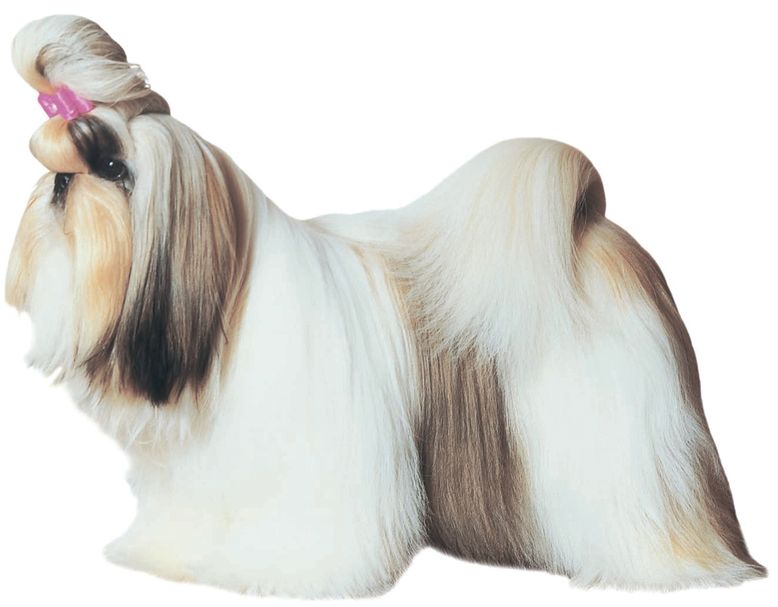
Physical Characteristics of the Shih Tzu
(from the American Kennel Clubs breed standard)
Body: Short-coupled and sturdy with no waist or tuck-up. The Shih Tzu is slightly longer than tall.
Tail: Set on high, heavily plumed, carried in curve well over back.
Coat: Luxurious, double-coated, dense, long, and flowing. Slight wave permissible. Hair on top of head is tied up.
Size: Ideally, height at withers is 9 to 10.5 inches; but, not less than 8 inches nor more than 11 inches. Ideally, weight of mature dogs, 9 to 16 pounds.
Feet: Firm, well-padded, point straight ahead.
FROM THE COLLECTION OF GARY GRAFFMAN.
This ancient ink and color drawing on silk appears in a scroll executed by Chou Fang from the Tang Dynasty (618907 A.D.). The scroll depicts ladies in waiting, teasing a Shih Tzu with their insect-chasing whip.
HISTORY OF THE
Shih Tzu
The history of the Shih Tzu, meaninglion manein Chinese, was closely intermingled with the Tibetan-Chinese politics during the Tang Dynasty.
The Shih Tzu is an Asian breed whose ancestry lies both in Tibet and in China. As a result, some of todays enthusiasts consider it a Tibetan breed while others more closely associate this adorable little dog with China.
TIBETAN BACKGROUND
Although there have been times when the Chinese and Tibetans have cooperated with each other, since the seventh century there has frequently been strife between the two nations. For the sake of diplomacy, Tibetan nobles sometimes took Chinese brides of royal rank. It therefore follows that gifts were exchanged between people of these two great cultures in which mythology abounds. Often these gifts were dogs. The Lhasa Apso, a Tibetan breed and direct ancestor of the Shih Tzu, is said to have existed since 800 B.C., but there is no tangible evidence of this as written historical records in Tibet were not kept until around A.D. 639.
ANCESTRY: CHINA
Over the years, various theories have been put forward regarding the origin of the Shih Tzu. According to one theory, three temple dogs were sent to China around 1650, and from these dogs came the Shih Tzu.
Because the Shih Tzu descended from the Tibetan Lhasa Apso, Tibet is considered the earliest ancestral home of the Shih Tzu. Dogs were given as tribute gifts for safe passage from Tibet to China, the long journey by caravan taking eight to ten months. The Tibetan Lhasa Apsos were not considered sacred animals, but they were treated as prized possessions nonetheless. They were only given as gifts never sold. The dogs were undoubtedly held in high esteem, for it was believed that they carried the souls of monks who had erred in their previous lives.
The Cheltenham Show of 1933, the year before the Tibetan breed standards were sorted out! Here are prominent British fanciers, from left to right: Lady Brownrigg with Hibou, Yangtse and Shu-ssa; Miss Hutchins with Lung-fu-ssu and Tang; General Sir Douglas Brownrigg with Hzu-Hsi and Miss Marjorie Wild with one of her Lhasa Apsos.
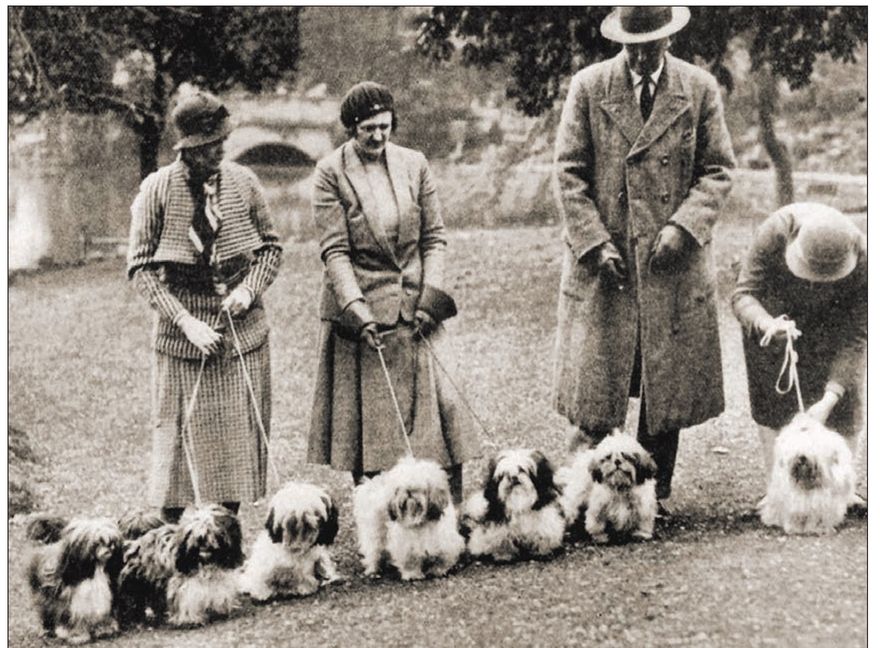
Buddhism spread from India into Tibet in the seventh century but was not adopted in China until 1253, at the time of Kublai Khan. The lion, in various mythological forms, plays an important part in Buddhism. Indeed the Buddha Manjusri, who is the god of learning, is believed to travel around as a simple priest with a small dog. This dog, called a Ha-pa, can instantly be transformed into a lion so that the Buddha can ride on its back. The snow lion, though, is considered the king of animals and it is with this white mythological beast that the Shih Tzu and Lhasa Apso are most closely connected. The snow lion is believed to be so powerful that when it roars, seven dragons fall out of the sky.

ANCESTRY: IRELAND
The Shih Tzu first arrived in Ireland with Miss Hutchins in 1928 but, until the Second World War, the breed was only known in Variety classes there. In the mid-1960s the breed grew numerically stronger, and Shih Tzu in Ireland are now fairly popular. The Irish breeders strive hard and are truly dedicated to the breed.
The Tibetans would refer to Shih Tzu as Apsok, a name used to refer to all long-coated dogs.
Tibetans have always drawn distinction between the true lion and the dog lion, but have never been too clear about the naming of their breeds. Without doubt, some crossing took place between the various Tibetan breeds. Even today it is possible to breed together two fully-coated Lhasa Apsos or Shih Tzu and produce one or more puppies that look like pure-bred Tibetan Spaniels. This may come as something of a shock, but is clearly a throwback to earlier days. Interestingly, the Tibetans refer to all long-coated dogs as



